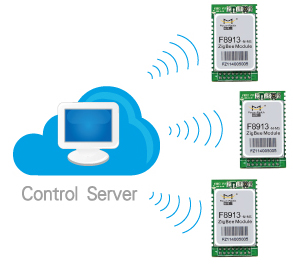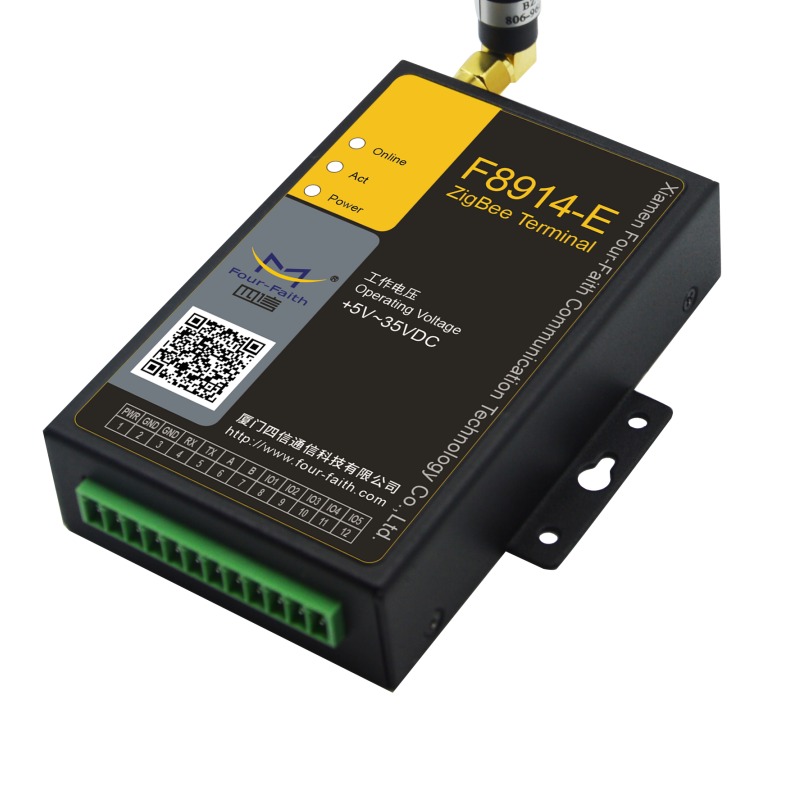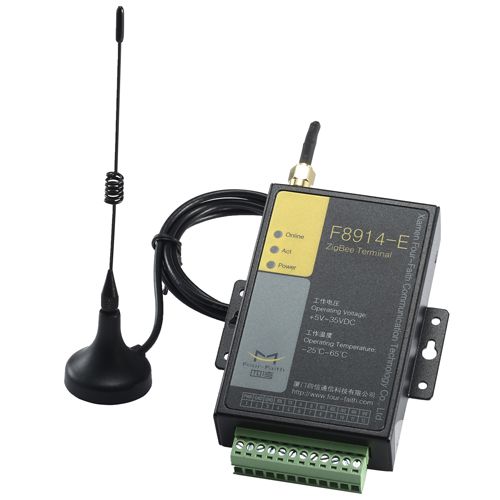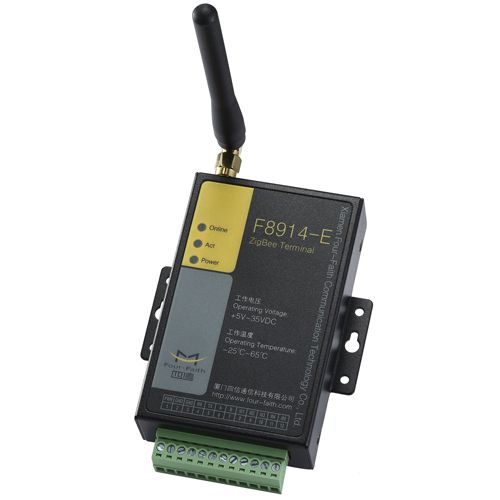Four-Faith F8914 Zigbee Terminal
● Four-Faith's Zigbee F8914 is an IoT wireless data terminal. It plays the role of transmitting long-distance wireless data for users through the Zigbee network in IoT-applied solutions and other smart interactive scenarios.
● The F8914 Zigbee terminal adopts industrial-grade designs, including an industrial-grade processor and wireless module, with the watchdog system, which makes it suitable for industrial use and capable of keeping its stable operation even in harsh environments.
● The F8914 Zigbee terminal has been widely used in the M2M field of the IoT industry, such as smart grids, smart transportation, industrial automation, and environmental protection, etc.
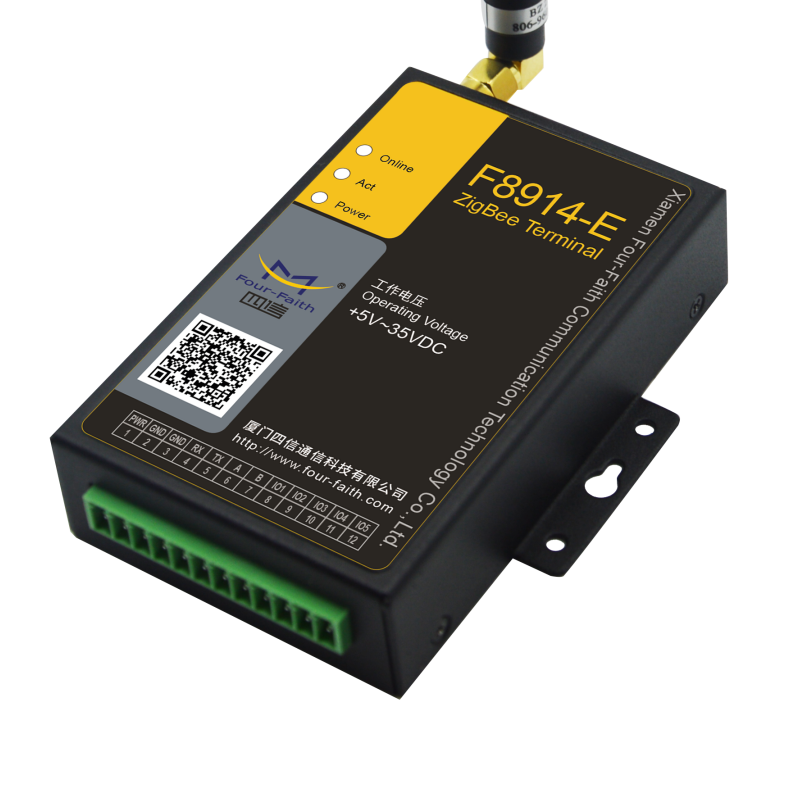
Communication distance of up to 2km
● The point-to-point communication distance of the F8914 ZigBee terminal is up to 2km.
Remotely configured & batch management
● Greatly reducing the working intensity.
